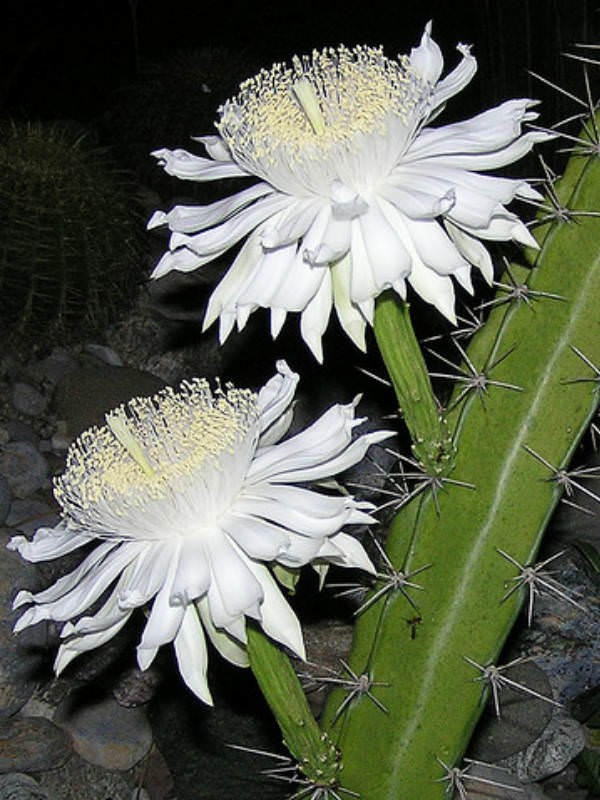The Acanthocereus genus, comprising an intriguing assembly of cacti, beckons the attention of enthusiasts and novices alike. With their tall, columnar stature and distinctive spines, these desert dwellers effortlessly command awe. But have you ever pondered how you can nurture and cultivate these magnificent specimens in a home garden? This guide endeavors to unravel the enigma surrounding Acanthocereus, from its captivating biology to tips on cultivation.
While it may be tempting to admire these ethereal plants from afar, the challenge lies in understanding their unique requirements. Can you create the perfect environment for the Acanthocereus while also considering design and aesthetics? Let’s delve into the fascinating world of the Acanthocereus and tackle this challenge head-on.
Botanical Characteristics of Acanthocereus
The genre Acanthocereus is characterized by its elegant and striking appearance, which may serve as a catalyst for their increasing popularity amongst succulent enthusiasts. Known for their tall growth habits and scant foliage—most often adorned with sharp, formidable spines—these cacti make an arresting focal point for any garden, patio, or indoor space.
Acanthocereus species typically exhibit a ribbed or columnar form, which can vary in height up to several meters. The plants display a greenish hue that remarkably resembles the surrounding terrestrial landscape, permitting them to hypnotically blend into their native habitats. The ribbing not only serves an aesthetic quality but also facilitates water retention, an essential trait for desert flora. Furthermore, Acanthocereus blossoms are a sight to behold—larger-than-life flowers emerge predominantly at dusk, showcasing hues ranging from white to vibrant pink. These nocturnal blooms often attract pollinators such as bats and moths, playing an integral role in their ecological function.
Many species within the Acanthocereus genus, including the Barbed Wire Cactus (Acanthocereus tetragonus), are scourged from the arid regions of Mexico and the Caribbean islands, where they have adapted to thrive despite the hardship of minimal rainfall and intense sunlight.
Cultivating Acanthocereus: Creating the Ultimate Habitat
Embarking on the journey to cultivate Acanthocereus introduces a realm of possibilities; however, success necessitates an intimate comprehension of these cacti’s foremost needs. Are you prepared to craft an environment that balances both aesthetics and the essential care this genus demands?
First and foremost, Acanthocereus requires an appropriate substrate. A well-draining soil mix is crucial to prevent root rot, as these cacti thrive in conditions where moisture can escape rapidly. Many gardeners opt for a combination of cactus soil, perlite, and coarse sand, creating a nurturing yet forgiving medium.
Next is light—an essential contributor to their health and vitality. Acanthocereus thrives in bright, direct sunlight, needing approximately six hours daily of sun exposure to flourish. Placing your plants by south or west-facing windows is ideal. However, if you live in areas where sunlight is intense and prolonged, providing some afternoon shade may prevent potential sunburn or dehydration.
Watering practices, too, provide an opportunity for cultivation mastery. While these cacti are drought-tolerant, they must not endure prolonged drought conditions. Implementing a seasonal schedule that mimics their natural habitat is prudent. During growing seasons, typically spring and summer, a good rule of thumb is to water when the top inch of soil feels dry to the touch. In contrast, during the dormant winter months, reduce watering significantly. Remember, overwatering is more perilous than underwatering.
Aesthetic Considerations: Designing Your Acanthocereus Display
Beyond their biological requirements, integrating Acanthocereus plants into your garden or indoor aesthetic presents another layer of enjoyment. How can you harmonize their striking stature with the visual elements of your surroundings? The bold, vertical growth can allow for various creative arrangements.
Using tall Acanthocereus specimens as vertical accents can significantly enhance a garden design. Consider juxtaposing them against vibrant succulents or low-growing plants to create an engaging contrast in height and shape. This juxtaposition amplifies their architectural form while allowing the viewer to appreciate the complexity of their beauty.
If indoor cultivation is your goal, incorporating Acanthocereus into decorative pots or unique planters can exemplify their aesthetic appeal. Hanging planters also provide an unconventional approach, allowing the plants to cascade gracefully, showing off their vertical growth. Furthermore, combining Acanthocereus with stones, pebbles, or driftwood can create an enchanting desert-like ambiance, bringing a touch of the wild into your home.
Pest Management and Common Challenges
Despite their hardy nature, Acanthocereus cacti are not immune to pest infestations or other common challenges that cacti enthusiasts might encounter. Awareness is key; are you prepared to face the pests that threaten your botanical masterpiece? Keeping vigilance is essential in ensuring that your Acanthocereus flourishes, free of intruders.
Common pests include mealybugs, spider mites, and scale insects. Regularly inspecting your plants ensures any potential infestations are identified early, making treatment easier. A gentle wash with water or insecticidal soap can usually suffice in managing minor pest issues. Furthermore, maintaining optimal airflow around your plants mitigates some susceptibility to these unwanted visitors. This can be especially relevant if they are cultivated indoors, where humidity and stagnant air can promote pest proliferation.
Additionally, pay close attention to physiological challenges faced by your Acanthocereus. Rotting at the base, particularly if watering habits have been inconsistent, may imply underlying stress. A visual inspection reveals critical indicators of unwell plants; herein lies the importance of acting swiftly to remedy any emerging problems.
The Joy of Growing Acanthocereus
As your cultivation journey continues, the rewards of nurturing Acanthocereus go beyond mere aesthetic enhancement. Observing these majestic plants as they thrive in the care you provide fosters a bond that few other gardening pursuits can match. From their breathtaking blooms to the remarkable adaptability they exhibit in harsh environments, Acanthocereus still poses an engaging challenge. Will you rise to the occasion and become an Acanthocereus connoisseur?
In conclusion, embracing the cultivation of Acanthocereus presents an exciting challenge. With the right knowledge and a bit of creativity, these cacti can become both a conversation piece and a source of personal satisfaction. Can you transform your garden or home into a sanctuary that showcases the stunning beauty and resilience of the Acanthocereus genus? The journey awaits!

Leave a Comment